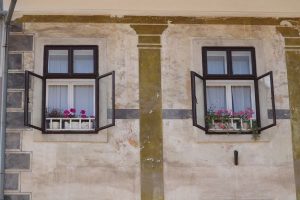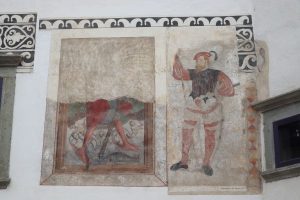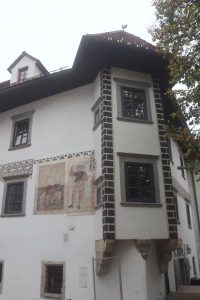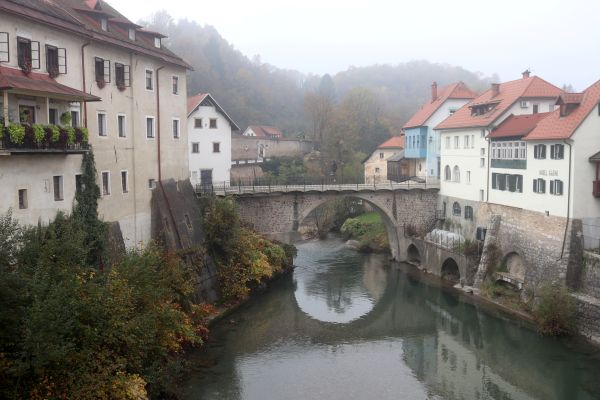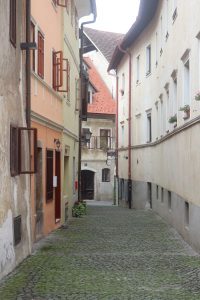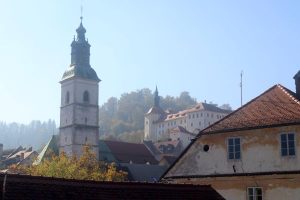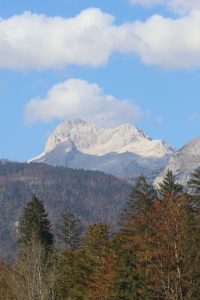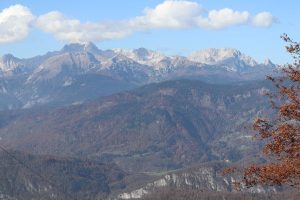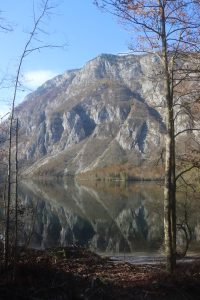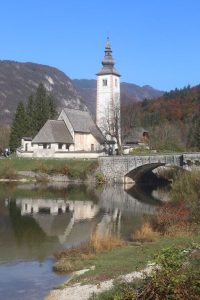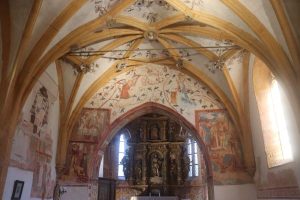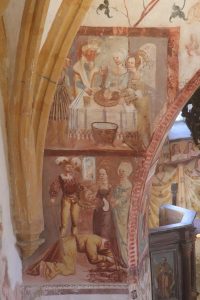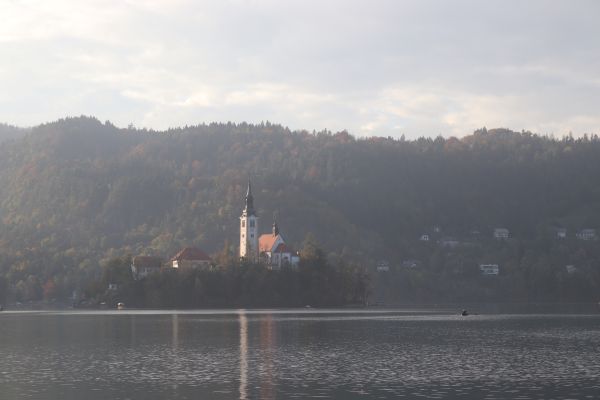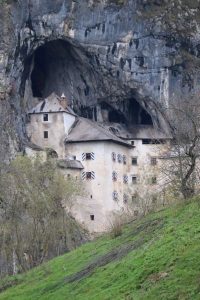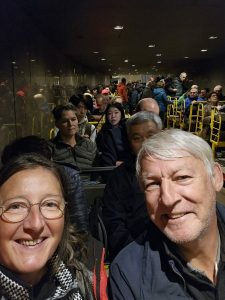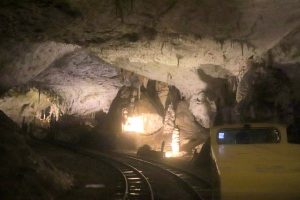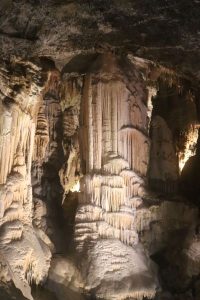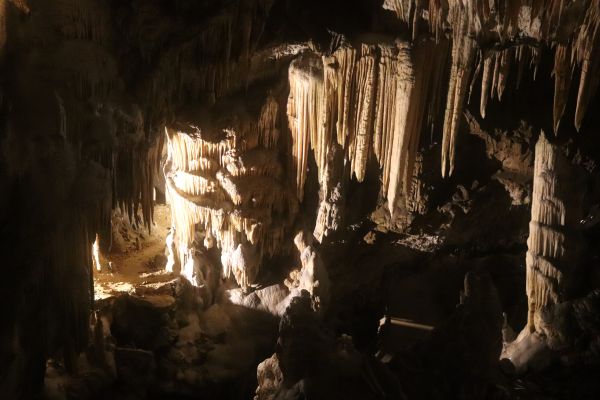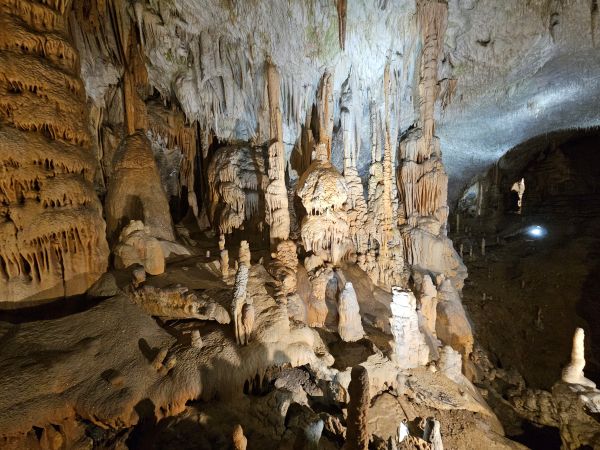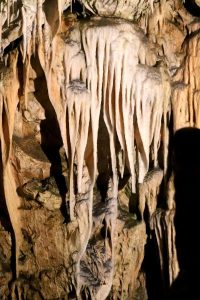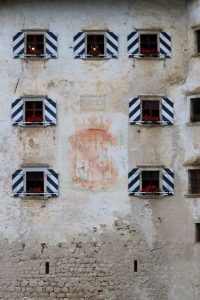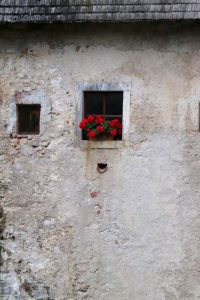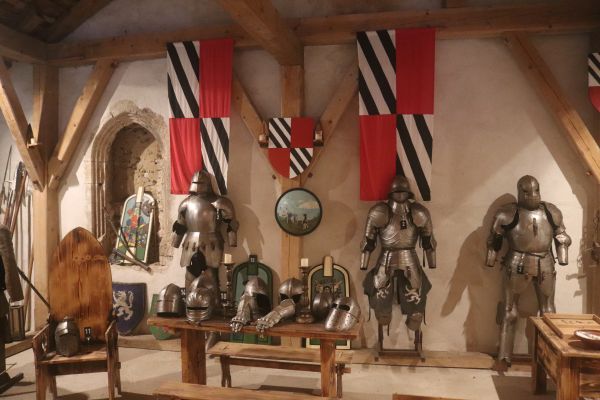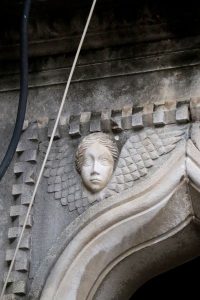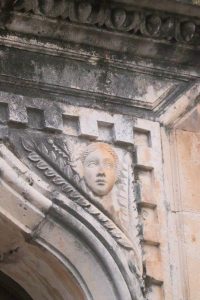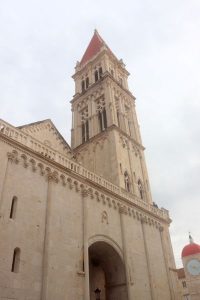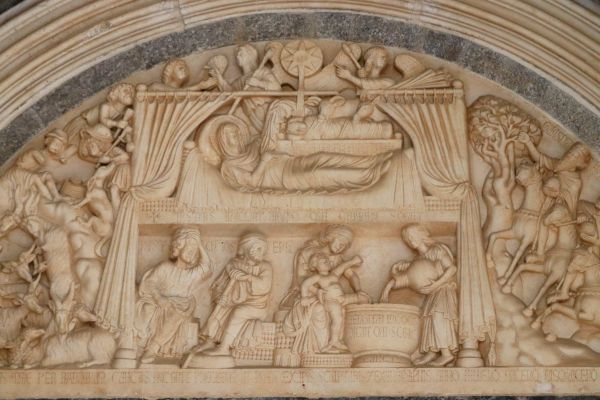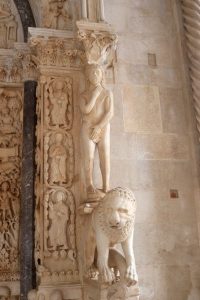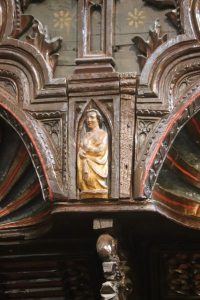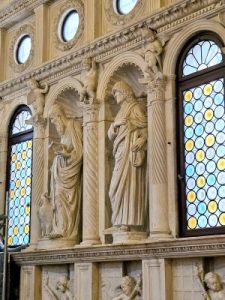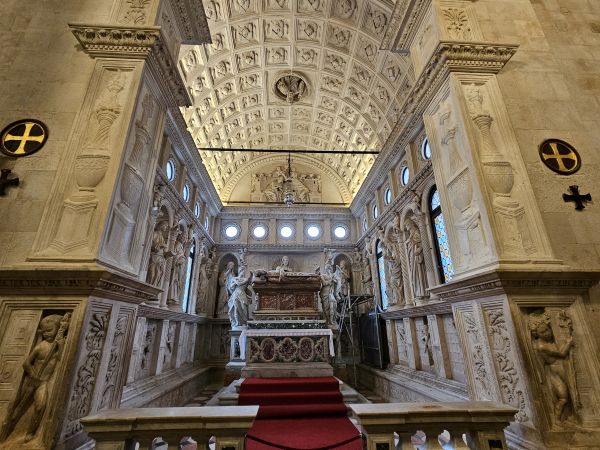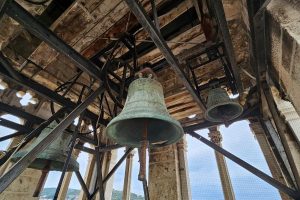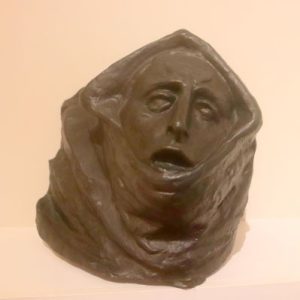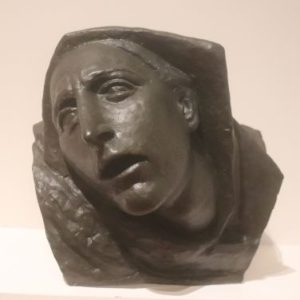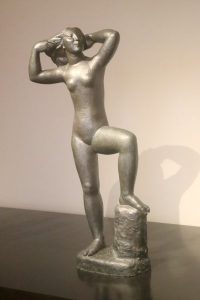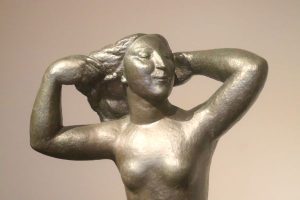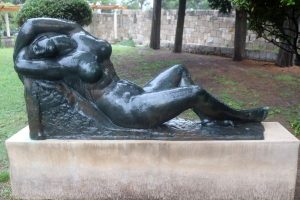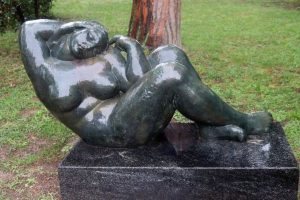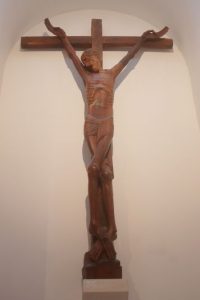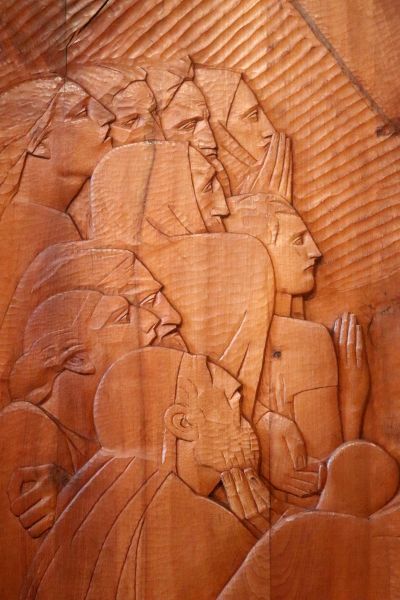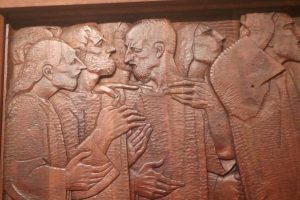We end our trip where we were supposed to have started it, in Bled, in the NW of Slovenia. Where we fled for the rain from Kranjska Gora almost seven weeks ago. It isn’t so bad now, but it is once again raining. We skip the walks through two of the gorges near Bled, the very touristic Vintgar Gorge and the more remote 2km-long Pokljuka Gorge (or georges, as our landlady keeps on calling them). We skip the trip across the 1611m high Vršič Pass, not only because in the clouds the views are by far not as spectacular as described in the many guide books, but also because the road is closed, simple as it is.
Skofja Loka
On the one day that we have sunshine, sort of, we get to Skofja Loka, a small town with a lovely Medieval square, Mestni trg; except that much of the square is being repaired. But there is enough to admire, from a stone bridge and frescoed houses to an old church, re-decorated with modern stained glass.
Lake Bohinj
From there a small road takes us along the valleys, with Austrian-like villages and churches and yet another set of fabulous autumn colours, across the mountains, with distant snowy peaks, back down to Lake Bohinj. There is hardly any wind, and much of the lake is an almost perfect mirror for the mountain slopes on the other side, where, once again, colourful trees are bathing in the late sunlight.
At one end of the lake is the cable car to Vogel, from the village of Ukanc at 569m to the upper station at 1535m. The views must be beautiful, from above, but we have too little time left for the run upwards, and back down again.
At the other end is the tiny village of Studor, with the 14th C Church of St John the Baptist, next to the water, and next to yet another stone bridge. The frescos in the church are highly recommended by our guide book, but compared to the ones we have seen in the many Orthodox churches earlier during the trip these are fairly simple, naïve perhaps, and from the looks of it either extremely well preserved, or tastefully restored.
Bled
We make it to Bled in the late afternoon. Bled is famous for its lake, which indeed was a very nice sight, in the low sunlight, with its small island and church in the middle, and overlooked by its castle. But to go and visit the castle? Or the church? Hmm, how many castle and churches can you see? Perhaps we are getting a little saturated, and not only from the rain that comes down the next morning again.
You know, we decide to head home, instead. It was a great trip, but even the Balkans can be too much, after a while.

